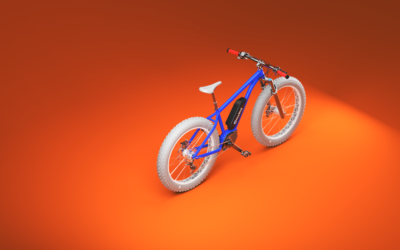Building on Keyshot’s existing keyframe architecture, KeyShot 2023 has replaced camera path animation in favor of a keyframe-based camera animation solution. It’s now easier than ever to create dynamic camera animations quickly.
Adding a Keyframe Animation
To get started, you’ll need a scene that’s ready to be animated and have your Animation timeline open (A-key or select Window, Animation).
Start by adding a camera keyframe animation, which you can do one of three ways:
- With the Animation Wizard – Hit the Animation Wizard button on the Animation timeline and select Keyframe from the Camera Animations section, then hit Next. You’ll then need to select the camera you want to animate from the visible list.
- Through the Scene Tree – Locate the camera in the scene tree, right click the camera and select Keyframe from the Add Animation flyout menu.
- Through the Camera List – The last way to add a camera keyframe animation is to select the camera you’d like to animate from your camera list under the Camera tab. Right-click, and select Keyframe from the Animation flyout menu. (Note: unlock the camera if the Animation menu is grayed-out.)
Working with Camera Keyframes
Once you’ve added a camera keyframe animation, your first keyframe will appear at the start of the Animation timeline. From this point, there are two ways to add keyframes, both can be found just above the timeline on the animation menu.
- Through the Add Keyframe button – this button looks like a diamond with a plus sign on the right corner. With this method, you’ll select a point on the timeline where you want your next camera view to be, select the Add Keyframe button to add a keyframe on the timeline at your selected point, then move your camera into the desired view. Now, when you scrub through the animation, it will move from your previously set camera position to your newly set camera position.
- With Record Keyframe – this is found just to the right of the Add Keyframe button and looks like a recording icon. When Record Keyframe is selected, you can click anywhere on the timeline and then move your camera into your desired view at that point. With Record enabled, KeyShot will automatically add a keyframe to the timeline where you made the camera adjustment.
Both methods allow you to quickly and easily create dynamic animations — it really just comes down to which way you prefer to work.
Dial in Your Settings
Once your keyframes have been added, you can further dial in your settings by dragging each keyframe on the timeline to adjust timing as well as changing your settings within the Properties window of each keyframe. It’s important to note that each keyframe can be adjusted independently, so adjusting one will not affect the others.

With the Properties panel open, and the Keyframe Settings section expanded, there is an important setting that you should be aware of, and that is Interpolation Method.
- Path Interpolation Method – with Path selected, your camera will travel from point A to point B in a straight line resulting in an effect similar to a dolly in and dolly out as the camera moves between points on either side of a target. This method is also essentially the same as KeyShot’s previous camera path animation that camera keyframing replaced. With Path selected you’ll also be able to adjust your tension settings the same way you were able to with camera path animations.
- Orbit Interpolation Method – with Orbit selected and a camera target set, the camera will move from point A to point B while trying to maintaining the initial distance of the first camera. This results in a smoother camera transition as the camera orbits around the point of interest rather then flying past it.
Below Interpolation Method, you will find Camera Target and Camera Pivot settings which can be set the same way you would set your camera target in the Real-time View.
Below Keyframe Settings, you’ll also find the Animation Time Settings to control time and motion ease fore each individual animation.
After your keyframes and settings are dialed in, you can render the camera keyframe animation the same way you would render any other animation in KeyShot. Select Render from the Toolbar, select the Animation tab, then adjust the setting for the type of output you need, and click Render.
Now You’re Ready to Work with Keyframes
With camera keyframe animation, creating quick, dynamic visuals for your KeyShot projects has never been easier. If you’re looking for a way to wow stakeholders while reducing time spent animating, consider giving Keyframe Animations a try.
Let’s See What You Create!
We’d love to see what you create with this tip. Check out the new KeyShot Luminaries online community to see what others are creating and share your own work. And if you have a suggestion for another tip, share it in the comments below.








0 Comments